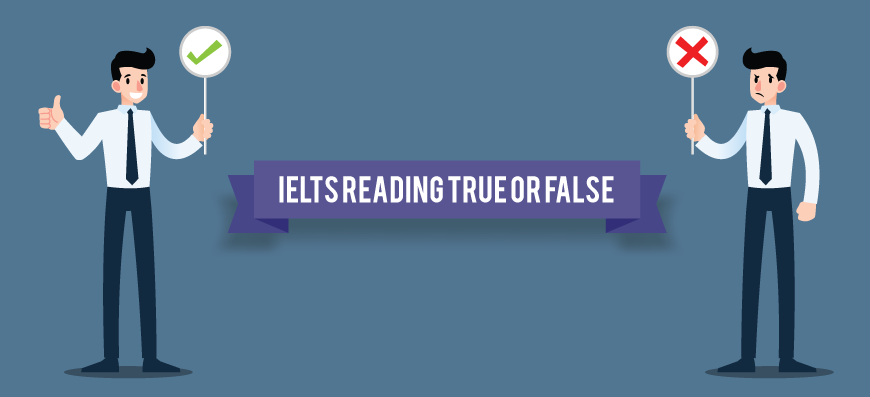IELTS Reading: True Or False

Identifying information which is popularly known as True, False or Not Given respectively has always been a raw nerve for IELTS learners as these questions types, in which the aspirant has to verify the given statements, are known to be very mind-boggling as students always get confused and tend to waste their time. However, it is because they don't read to extract information; they read to match information. Let's discuss the Do's and Don'ts of cracking this question type.
What are they?
True, False or Not Given are the facts. Usually, you'll get this question type if the passage is based on a survey or scientifically proven research.
The Don'ts:
The statement is true when both the extract of the text and that of the statement are the same.
For example,
Text
… 60% of researchers want to study stars…….
Statement which is True
The majority of the researchers are inclined to study stars.
As you may observe, 60% is paraphrased as the Majority and want writing as paraphrased, but it didn't change the overall meaning of the sentence.
The Statement is False when the text and the statement are in the opposite.
For example:
Text
… 60% of researchers want to study stars…….
Statement which is False
A few researchers are interested in stars.
Here, 60% is the majority, whereas a few are considered as not much but enough, which are in contrast to each other.
The Statement is Not Given, when even a fraction of it can't be verified.
For example:
Text
… 60% of researchers want to study stars…….
The statement which will be marked as Not Given
The majority of Russian scientists are inclined to study stars.
Although the other elements are verifiable, the word 'Russian' is nowhere; hence the entire statement will go unverified.
Hope all these tips will help you to achieve your target band score...
What are they?
True, False or Not Given are the facts. Usually, you'll get this question type if the passage is based on a survey or scientifically proven research.
The Don'ts:
- Don't start reading the entire passage. Skim each and every paragraph to get the general view. After skimming, read the statements which are to be verified.
- There are a few students who have told me that to save time they either mark all the statements True or as False, in the hope that any two or three answers will be correct, which is practically not helpful especially for those whose band requirement is high. So those who are planning to go for PR or for Master's, don't even think to do this, until and unless not required.
- Read all the statements but one by one, first read the first statement and then find the answer. Many students read all the statements at once and then read them again and again which wastes their time.
- Read to extract information and not to match the information. Extract means to get the key point or central idea of the given statement, that what is needed to be known. No statement would be written word for word, hence, there is no fun to match. As the information is always paraphrased.
- Underline the keyword and keep the statement's key idea in mind while looking for the answer.
- Scanning is a helpful tool to save time.
The statement is true when both the extract of the text and that of the statement are the same.
For example,
Text
… 60% of researchers want to study stars…….
Statement which is True
The majority of the researchers are inclined to study stars.
As you may observe, 60% is paraphrased as the Majority and want writing as paraphrased, but it didn't change the overall meaning of the sentence.
The Statement is False when the text and the statement are in the opposite.
For example:
Text
… 60% of researchers want to study stars…….
Statement which is False
A few researchers are interested in stars.
Here, 60% is the majority, whereas a few are considered as not much but enough, which are in contrast to each other.
The Statement is Not Given, when even a fraction of it can't be verified.
For example:
Text
… 60% of researchers want to study stars…….
The statement which will be marked as Not Given
The majority of Russian scientists are inclined to study stars.
Although the other elements are verifiable, the word 'Russian' is nowhere; hence the entire statement will go unverified.
Hope all these tips will help you to achieve your target band score...
Posted
September 04, 2019





